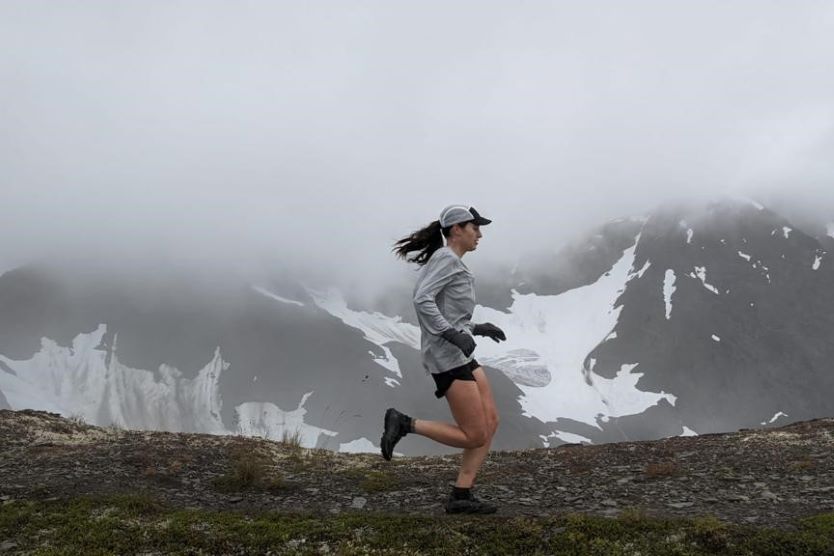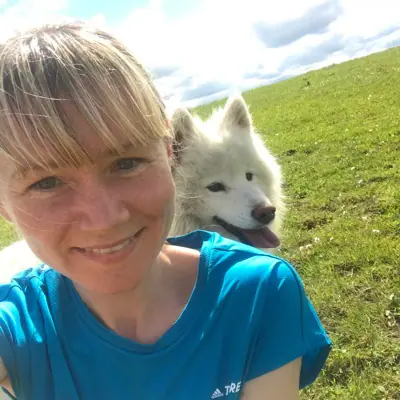Alaska is mountain runner Eden. The scenery is breathtaking, the trails are technical and challenging, and much of the state wild and remote by any standard. But as one local pointed out, “We have a lot of oxygen,” as the base of a lot of mountains is quite close to sea level, so altitude is not a problem.
Although scattered and informal in structure, there exists a strong and open mountain-running community in Alaska, with multiple generations racing side by side. There is a strong emphasis on developing the mountain racers of tomorrow, as well as a respect for the sometimes-dangerous forces of nature and looking out for fellow trail users.
The organization at the center of this community is Alaska Mountain Runners. The nonprofit, volunteer-run organization has the twin goals of promoting and developing the sport of mountain running in Alaska, and encouraging trail conservation and maintenance work. The organization hosts the annual Bird Ridge Hill Climb, and also promotes a number of other races by individual race organizers throughout Alaska. On their website, they provide a calendar of events and a results database, and details of their annual Grand Prix series of races.

Lars Arneson, winner of the 2022 Crazy Lazy race, the first race on the Alaska Mountain Runners Grand Prix series. Photo: Alaska Mountain Runners/Mary Ann Regan
The organization is run on a shoestring budget, but they manage to raise enough from entries to the Bird Ridge Hill Climb to fund the rest of the year’s antics, and even have a little left over to donate to Alaskan runners who are representing the U.S. at skyrunning.
Owing to the technical nature of their natural environment, and a culture of involvement and development of junior runners, young Alaskans are regularly high achievers in youth skyrunning. In July of 2022, Alaska was represented at the Youth Skyrunning World Championships in Andorra by Sophia Mayers and Josh Taylor, who each scored top 20 places in both the Vertical Kilometer and Skyrace in their various categories.
The Alaskan mountain running community is showcased in all its glory, on July 4 each year, at the annual Mount Marathon Race. The up-and-down classic mountain race dates back to 1915. It attracts a number of visiting elites and international runners each year, including Kilian Jornet and Emelie Forsberg in 2015, but local runners form much of the field.
The race is divided into three categories, with juniors, men, and women having separate start times. Numbers are capped at 375 men, 375 women, and 300 juniors. Often whole families take part, and thousands more come out to support the runners and help out. Local racers are loyal to the race, which has longevity awards for runners who have taken part in the race more than 20 times.
One runner, Fred Moore, has competed in 52 consecutive Mount Marathon Races, from 1970 through to 2022 — the race didn’t take place in 2020 courtesy of the COVID-19 pandemic but Moore and his buddies still ran the course. The event and the training days in the build-up to it are often where friendships are formed, as newcomers are taken under the wings of established runners.
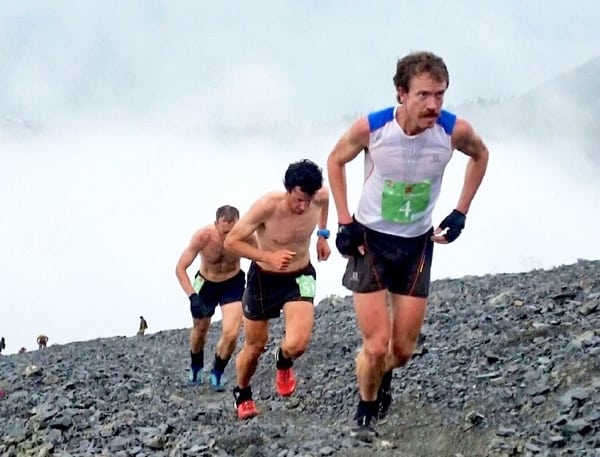
Rickey Gates on his way to second place in the 2015 Mount Marathon Race with Kilian Jornet and Jim Shine in tow. Photo: iRunFar/Cody Priest
Matias Saari is race director of the Mount Marathon Race and the Crow Pass Crossing, as well as Secretary and Board Member of the Alaska Mountain Runners.
He said, “One of the big questions I get is, ‘Is there a training group I can join? How do I find people to run with?’ I tell people to just go to an event, hang out, socialize, you’ll meet people that way, and get invited on a run. Mount Marathon is like that a lot. Newcomers will just sort of show up at the base of the mountain and chat people up, and ask them if they’re going out on a run, and if they can join. They can maybe get a few pointers. Veteran racers are super willing to give advice to those who are less experienced. There’s the safety issue, the more people learn, the safer it will be.”
Saari continued, “I think most veteran Mount Marathon runners have actually helped people who were going the wrong way or struggling. People feel strongly about educating those who are less experienced and helping them out. Alaskan-style racing is different from a lot of other places. We have races that are unmarked, we have courses that don’t have any aid stations and are remote. There’s a degree of individual racer responsibility that’s pretty high in Alaskan mountain racing. People are expected to be competent and look after themselves and look after others who may need help.”
For Alaskan resident Claire Tooher-Connelly, running with others is as much about a buddy system for safety as it is about socializing. She said, “I had a bad bear encounter a few years ago, so now I won’t go on the mountain alone. Myself and my daughter encountered a grizzly. We survived but our dog was attacked.” These days, Claire always runs with a friend and says, “If I’m with one other person I’m fine.”
Claire, who is originally from Cork, Ireland, has lived in Alaska for 27 years. She was already a keen road runner, but upon moving to Alaska, a friend convinced her to try out a mountain race. She said, “The first race I did was Bird Ridge. I’d never been on the mountain before and I ended up racing it, and that’s what got me hooked. And then my friend said, ‘Let’s do Mount Marathon.’”
Although she no longer races, Claire still attends the Mount Marathon Race each year as a supporter and describes the carnival-like atmosphere of the event saying: “It’s like the Alaska Olympics, so many people. A lot of families do it. You’d have mothers, fathers, and their kids doing it. It’s a huge family thing.”
Claire introduced each of her six children to the mountains at a young age and entered them in races as soon as they were old enough. Her son Mikey, now 20, has represented the U.S. at skyrunning on numerous occasions and her daughter Annie, aged 24, is an avid ultra-trail runner and current Vice President of the Alaska Mountain Runners.
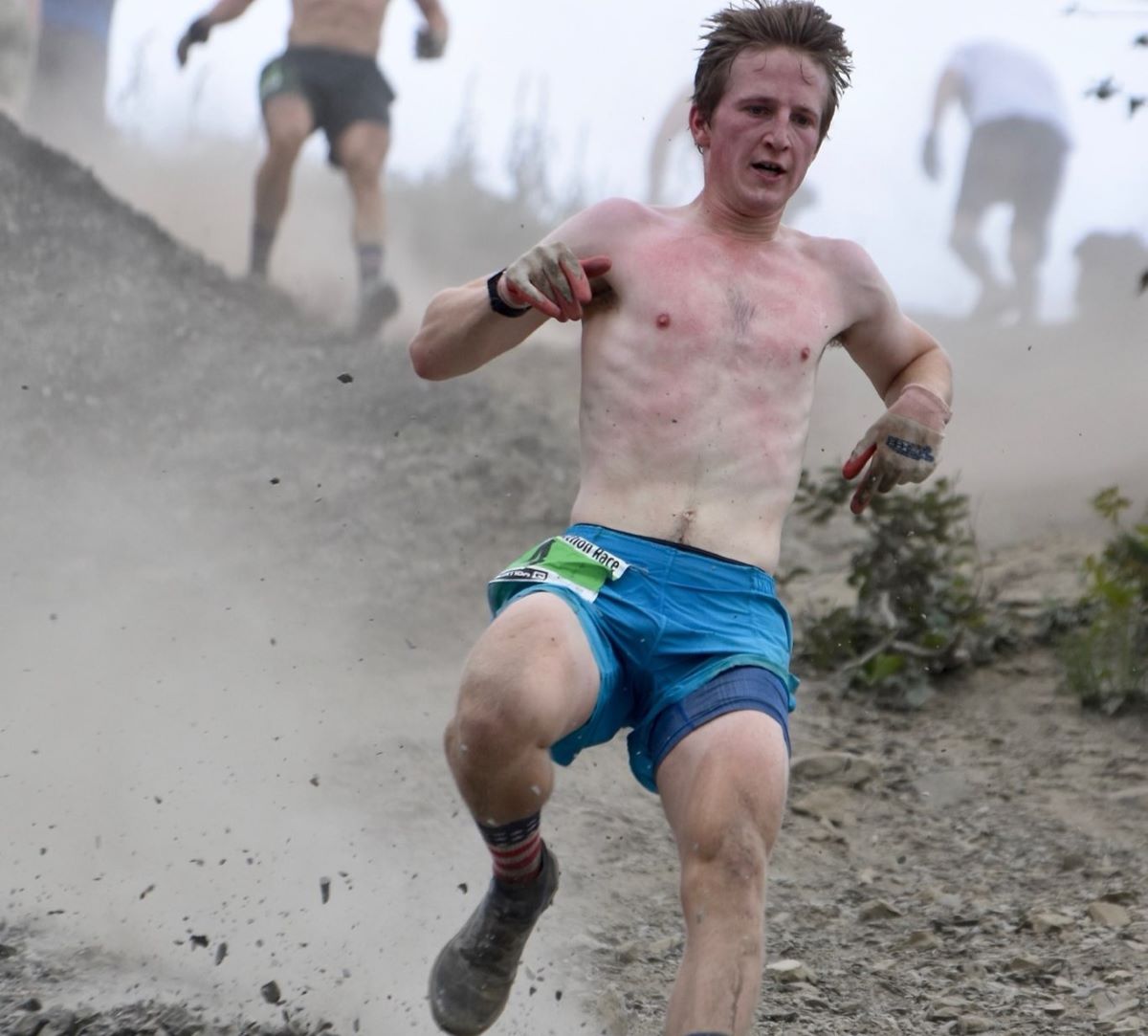
Mikey Connelly descending Mount Marathon during the 2022 Mount Marathon Race. Photo courtesy of Claire Tooher-Connelly.
Annie did her first ultra at age 16 or 17 and said, “I think at the time that was young but I’m seeing a lot more people that age starting to get into ultras, which is really cool.” Like the Connellys, Annie recalls a number of other multi-generational runner families that she and her siblings grew up alongside, who are still actively racing. “There are a lot of strong runners and people are getting their kids into it, and the kids are sticking with it.”
Each year, she takes part in the Grand Prix series of races. This is a series of eight races, including classic up-down mountain races and uphill-only routes, beginning in March and usually culminating with the Matanuska Peak Challenge — a highly technical 14-mile out-and-back race with 10,000 feet of elevation — in August. The races are generally not well marked and it’s up to runners to figure out the route for themselves, which adds to the challenge and the sense of adventure. Runners keep coming back each year to test themselves on the same routes, with most sticking around to celebrate and debrief on the events of the day.
Annie says, “You get a lot of time with the community. If you do the races consistently you will almost always know the people who are around you and it’s great because everyone is really supportive. There is almost always an after-party, but it’s quite informal. It’s a really nice chance to chat about the race and training goals, and what could have gone better.”
Annie’s training also forms part of a busy social life as she said, “I usually go out with friends — there’s quite a few groups and you usually have options. We used to have Thirsty Thursdays, where a bunch of us would go for a run and then hang out at a bar after. Now there’s lots of different groups that go year-round.”
As well as the more informal run groups, a group called Alaska Endurance Project provides more structured training and coaching for mountain runners throughout the year, in more of a traditional running club format. They generally train on the mountains throughout the summer and focus more on track sessions in the wintertime, as well as developing athletes in the cross-country discipline. The group is well-regarded by locals looking to improve their running, and can also be a good first port of call for trail-loving newcomers to Alaska.
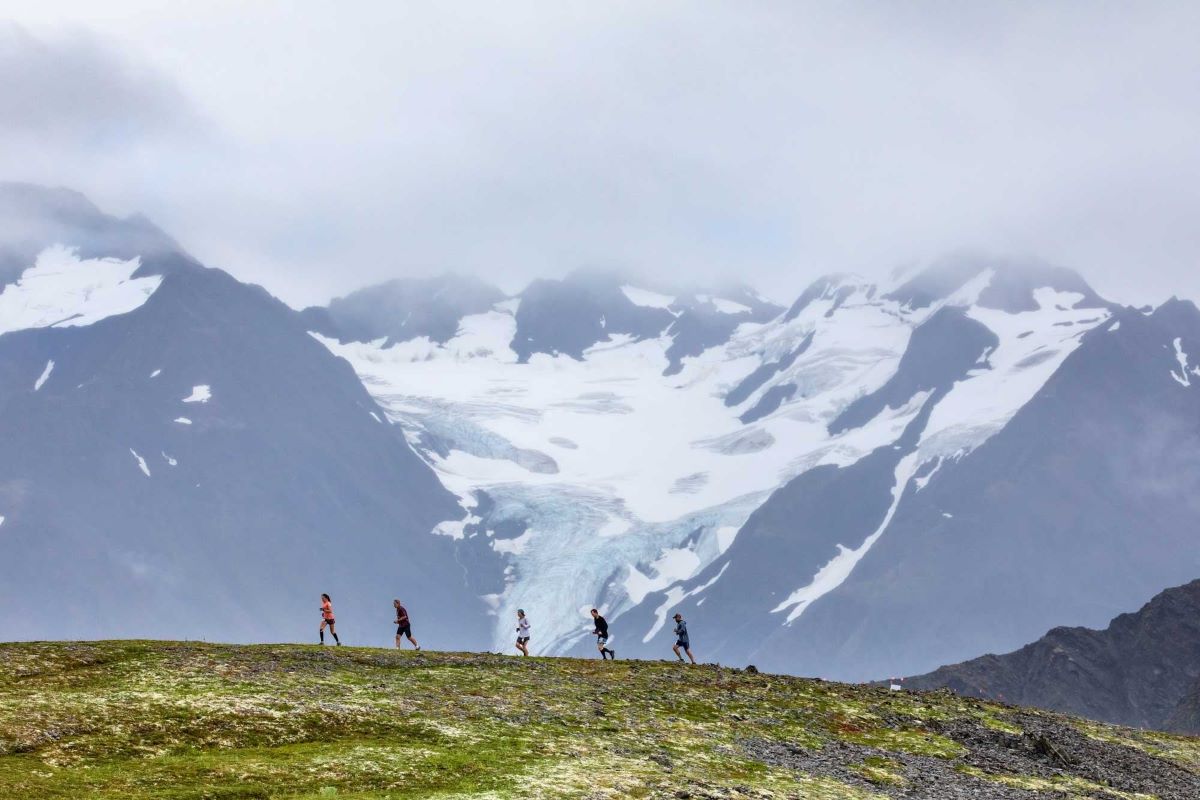
Spectacular views on the Cirque Series Alyeska race route. Photo courtesy of Alaska Mountain Runners.
Part of the ethos of Alaska Mountain Runners is to assist in trail conservation projects, with many runners taking it upon themselves to do minor maintenance work on their much-loved trails. Much like the social running groups, the organization of this work is organic by nature, rather than following a set allocation of roles.
Matias Saari says, “If a local trail is getting a little grown over, I’ll take the loppers out and improve it. There’s also a group called Alaska Trails, they put out projects that they are working on and round up volunteers and run events. People may sign up for those, but as much as that trail runners just take it upon themselves to do a little work on trails that are meaningful to them. There’s a lot of trails that need maintenance and the park is understaffed, there is definitely a need for volunteers.”
At the time of writing, all Alaskan mountain-runner eyes are currently turned to the 22.5-mile Crow Pass Crossing, which was rescheduled for 2022 to August 7, the day after the traditional season finale of the Matanuska Peak Challenge, with organizers offering an award for what they’ve dubbed the Burly Double to anyone who completes both. There is no doubt that these hardy mountain folk will rise to the challenge.
Call for Comments
Have you raced in Alaska? Tell us about your experience!

